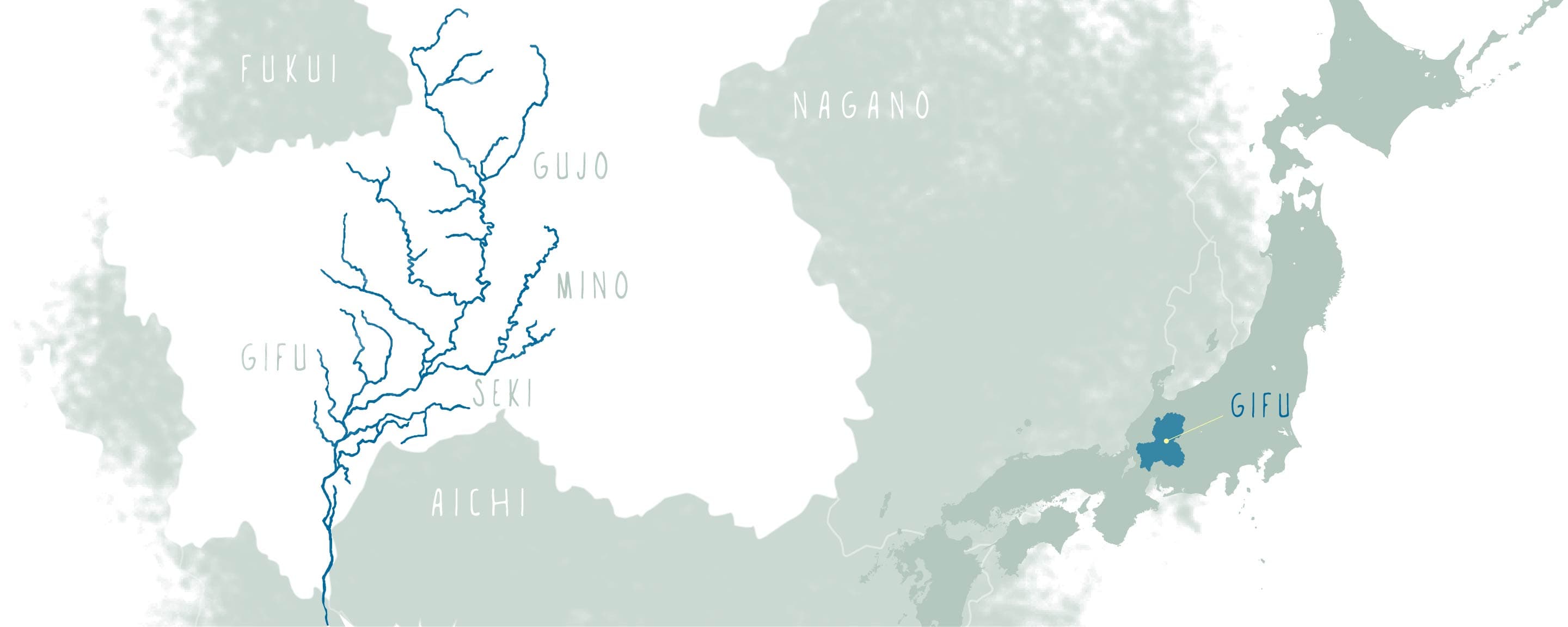GIAHS “Ayu of the Nagara River System”
- About Nagara River
- Well-loved Ayu Fish
- Various Creatures Living in the Clear Stream
- River Fisherman
- People's lives nurtured by the river
- The Future of Forests, Rivers and People
-
GIAHS “Ayu of the Nagara River System”
What is the Nagara River System ?
While as many as 860,000 people live in the basin, the clear waters of the Nagara River are preserved. The “Ayu” sweetfish in those clear waters of the Nagara River are deeply connected with the food, traditional culture, history and economy of the basin and are considered to be the symbol of richness of the Nagara River.
The system in which people’s lives, the aquatic environment and fishery resources closely relate to each other and circulate can be seen through ayu. That is the “satokawa” system that Gifu Prefecture boasts to the world.
In 2015, the system was designated a Globally Important Agricultural Heritage System as “Ayu of the Nagara River System.”

The Nagara River System
The cyclical “Satokawa” system links the aquatic environment,
fishing resources and daily
lives of the people.
Forests Boasting
Clear Waters
One of Japan’s three clearest rivers
while flowing through urban areas


Ayu Nurtured Through
the Links Between Forests,
Rivers and the Sea
Biodiversity and securing
ayu fish resources
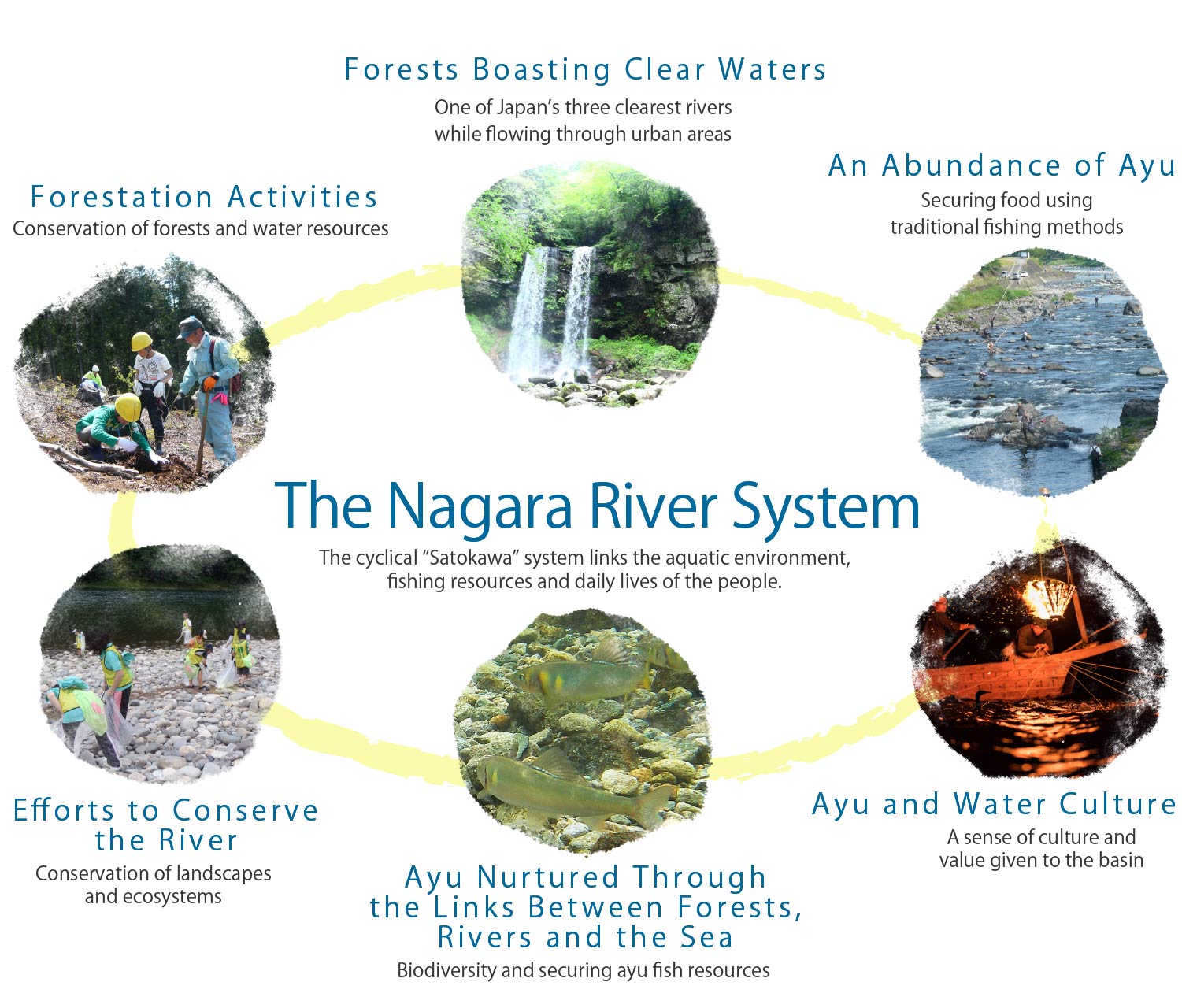
Forests Boasting Clear Waters

One of Japan’s three clearest rivers while flowing through urban areas
An Abundance of Ayu
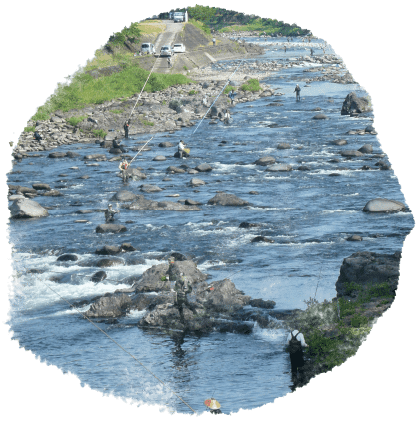
Securing food using traditional fishing methods
Ayu and Water Culture

A sense of culture and value given to the basin
Ayu Nurtured Through the Links Between Forests, Rivers and the Sea

Biodiversity and securing ayu fish resources
Efforts to Conserve the River
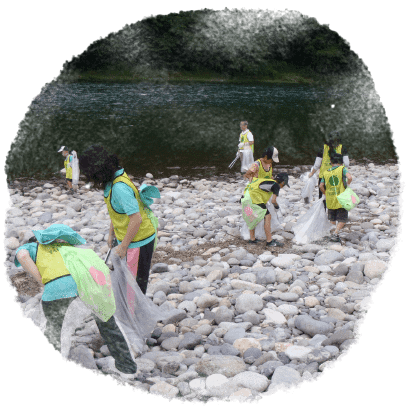
Conservation of landscapes and ecosystems
Forestation Activities
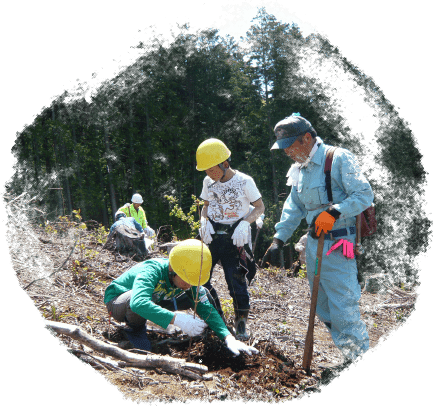
Conservation of forests and water resources
Nagara River System
In 2015, “Ayu of the Nagara River System” (linkage between people and sweetfish in Satokawa) was designated as GIAHS. The richness of the Nagara River is symbolized by the ayu (sweetfish), also known as the "Queen of Clear Water. Ayu is also called "fragrant fish" because it grows by eating moss on the stones at the bottom of the river, which gives it a mellow aroma similar to that of watermelon.
The site was designated GIAHS not only for ayu but also for the clear water of the Nagara River, its ecosystem, headwaters forest, traditional culture and the livelihood of the people in the basin living with the water.
In the Nagara River basin, they are deeply related to each other with the keyword “satokawa,” and it was highly evaluated and designated GIAHS.
The Nagara River = Satokawa
Satokawa is a river that enriches the lives of people in the basin with proper management. Management includes river cleaning, construction to prevent riverbank from sliding, establishment of rules for using water, etc.
Many people clean the Nagara River, protect rare animals and take part in activities to conserve the natural environment.
The Nagara River is also taken care of by planting trees in the forested headwaters and cutting surplus trees so that a lot of water can be stored in mountains to flow into the Nagara River.
Thanks to these efforts of many people, we can play in the river, eat river fish and enjoy culture such as cormorant fishing.
About Nagara River
The Nagara River famous for its cormorant fishing.
The Nagara River runs through Gifu Prefecture from Mt. Dainichigatake in northern Gifu to the south, joining the Ibi River in Kuwana City, Mie Prefecture, and flowing into Ise Bay.
The total length of the river is 166 km, and 860,000 people live in the basin. Along with the Shimanto River in Kochi Prefecture and the Kakita River in Shizuoka Prefecture, the Nagara River is considered one of Japan’s three clearest rivers and has been selected as one of the 100 best waters in the nation.
For the people living in the basin, crossing the river on their way to school and playing in the river in summer is a wonderful scenery that is impressed in their memories of their hometown.

